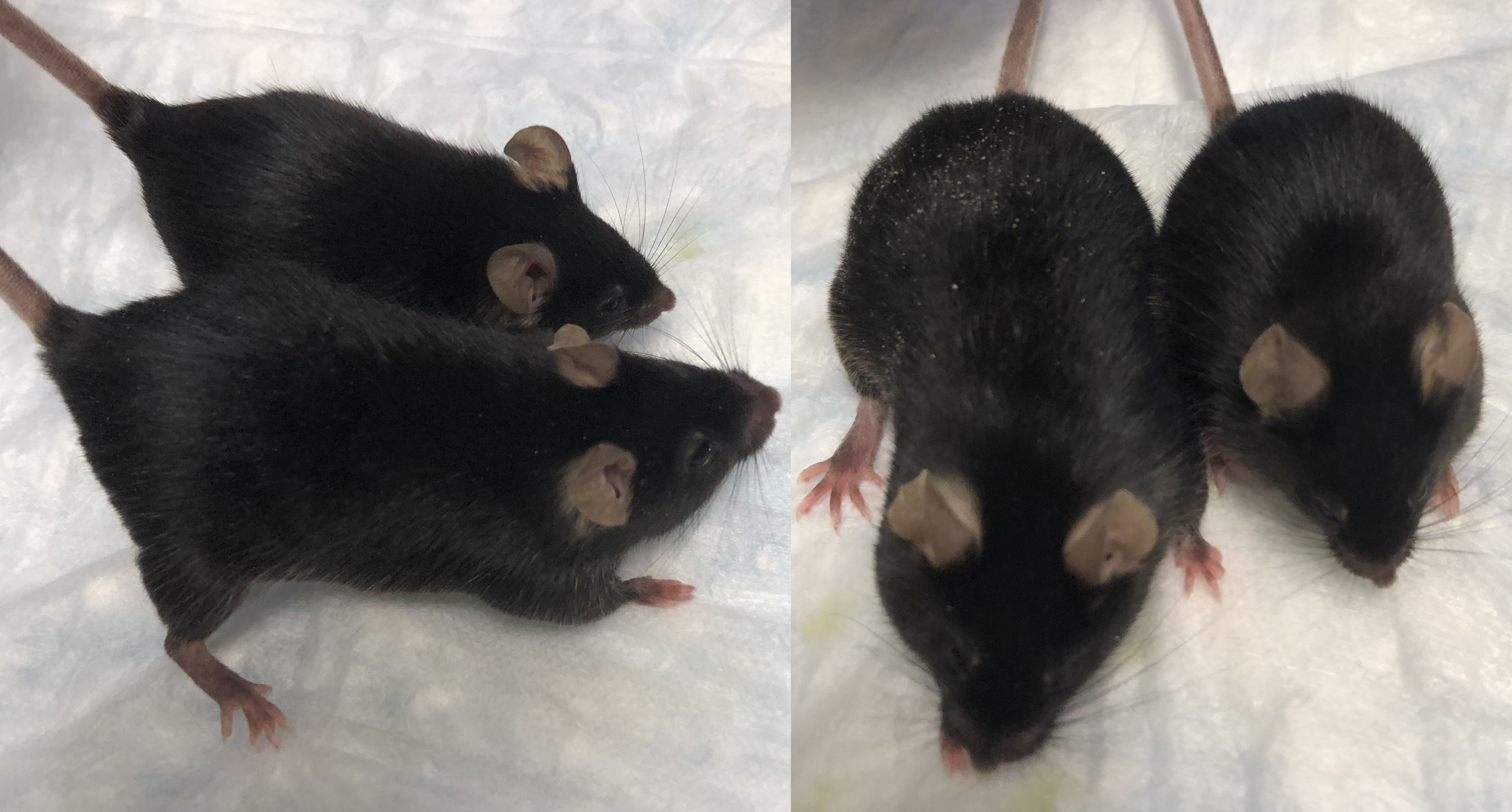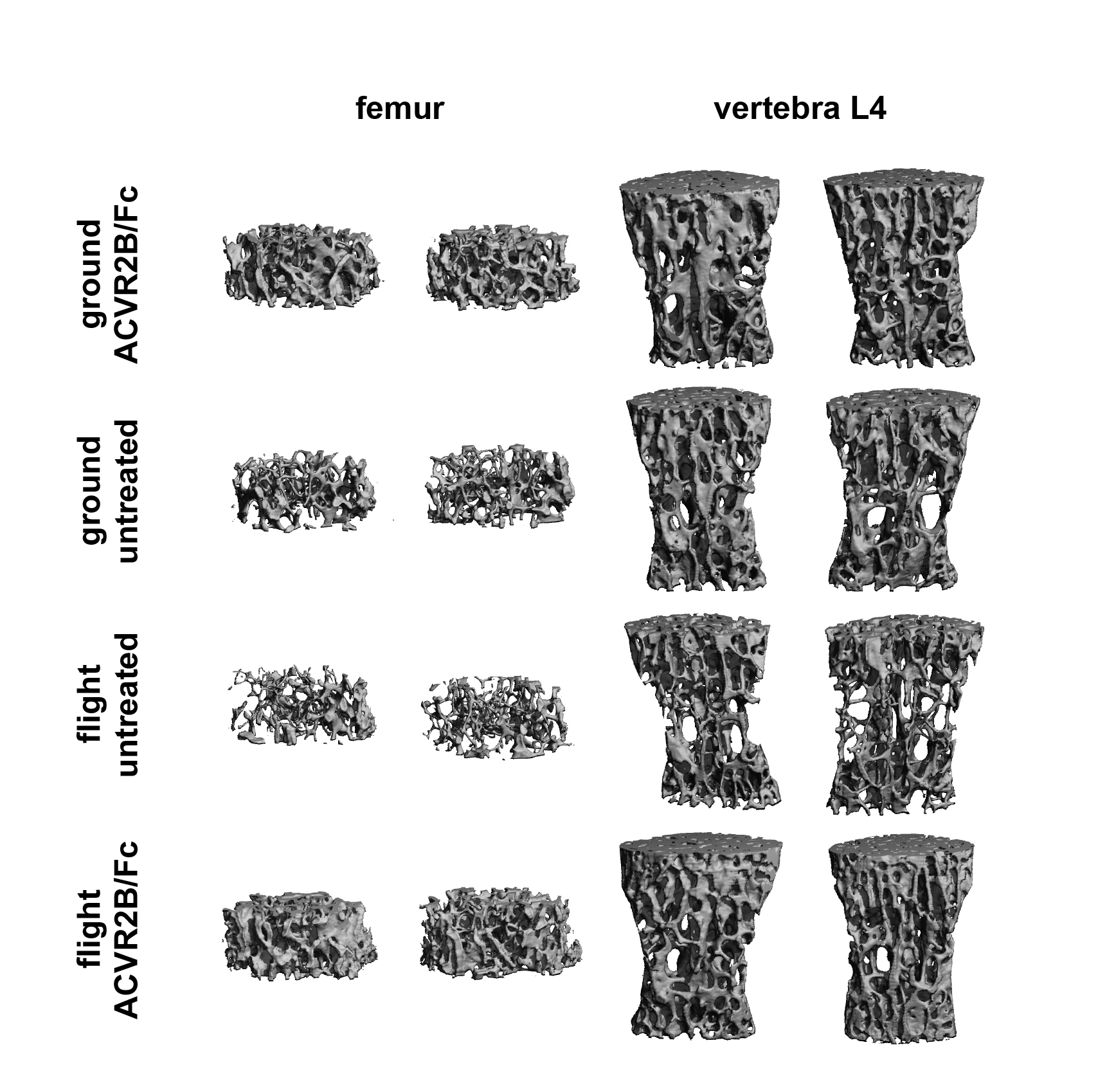Buff space mice could stop astronauts from losing bone and muscle mass

Super-muscular mice may now reveal a way to keep astronauts from losing muscle and bone in the microgravity of space, a new study finds.
A major challenge astronauts face during prolonged space missions is the simultaneous loss of bone and muscle, which weaken and atrophy due to disuse outside the constant pull of Earth's gravity. Previous research found that in microgravity, astronauts can lose up to 20% of their muscle mass in less than two weeks.
The husband-and-wife team of Se-Jin Lee and Emily Germain-Lee thought they might have found a way to fight bone and muscle loss when Lee and his colleagues at Johns Hopkins University helped discover myostatin, a protein that normally limits muscle growth, in the 1990s.
Related: The human body in space: 6 weird facts
"Back then, we showed that mice in which we deleted the myostatin gene had dramatic increases in muscle mass throughout the body, with individual muscles growing to about twice the normal size," Lee, a geneticist now at the Jackson Laboratory for Genomic Medicine in Farmington, Connecticut, told Space.com. "This immediately suggested the possibility that blocking myostatin might be an effective strategy to combat muscle loss due to a wide range of diseases. This also suggested the possibility that this might be effective for astronauts during extended space travel."
For the past 20 years, the researchers have wanted to see what effects blocking myostatin would have in mice sent to space. "We finally got the opportunity to do so last year," Lee said.
In December, the scientists launched 40 mice from NASA's Kennedy Space Center to the International Space Station aboard SpaceX's CRS-19 cargo resupply services mission. "We were so impressed by the dedication, focus and enthusiasm that everyone brought to this project, and it was a privilege to have the opportunity to work with all of them," Lee said.
Breaking space news, the latest updates on rocket launches, skywatching events and more!
Related: How spacefaring rodents adapt to life in space (video)
While 24 of the 40 mice were normal, eight of them were missing the myostatin gene and eight others were treated with a molecule that suppressed both myostatin and a protein known as activin A, which has similar effects on muscle as myostatin.
Normal mice — those that carried the myostatin gene and received no protein-inhibiting treatments — lost significant muscle and bone mass during the 33 days spent in microgravity. In contrast, mice that were missing the myostatin gene and had a muscle mass about twice that of a regular mouse, largely retained their muscles during spaceflight.

In addition, the scientists found the mice that received the molecule suppressing myostatin and activin A saw dramatic increases in both muscle and bone mass. Moreover, mice treated with this molecule after returning to Earth experienced more recovery of muscle and bone mass when compared with untreated mice.
These findings suggest targeting myostatin and activin A "could be an effective therapeutic strategy to mitigate muscle and bone loss that occur in astronauts during extended spaceflight, as well as in people on Earth who suffer from disuse atrophy as a result of being bedridden, wheelchair-bound or elderly," Germain-Lee, a pediatric endocrinologist at the University of Connecticut School of Medicine in Farmington, told Space.com.
Related: Space travel causes joint problems in mice. But, what about humans?
Although the researchers find their results exciting, "It is important to remember that these studies were done using mice," Lee said. "Although mice have very similar physiology to humans, sometimes what we learn from mice does not translate exactly to humans. There is still a lot of work that would need to be done to develop treatments for humans, but we believe that this type of strategy holds great promise."
Lee, Germain-Lee and their colleagues detailed their findings online Sept. 7 in the journal Proceedings of the National Academy of Sciences.
Follow Charles Q. Choi on Twitter @cqchoi. Follow us on Twitter @Spacedotcom and on Facebook.

Charles Q. Choi is a contributing writer for Space.com and Live Science. He covers all things human origins and astronomy as well as physics, animals and general science topics. Charles has a Master of Arts degree from the University of Missouri-Columbia, School of Journalism and a Bachelor of Arts degree from the University of South Florida. Charles has visited every continent on Earth, drinking rancid yak butter tea in Lhasa, snorkeling with sea lions in the Galapagos and even climbing an iceberg in Antarctica. Visit him at http://www.sciwriter.us
